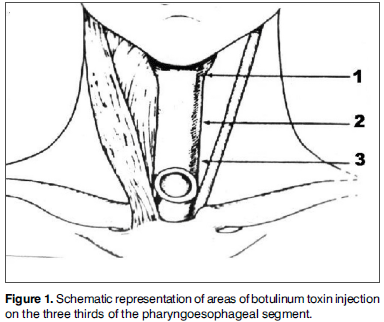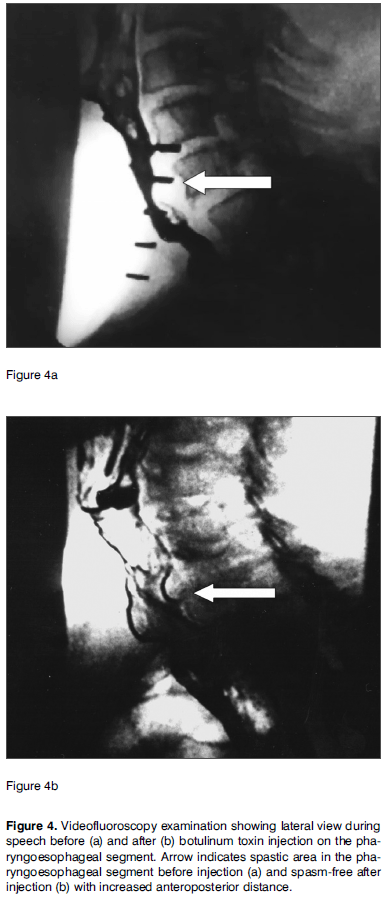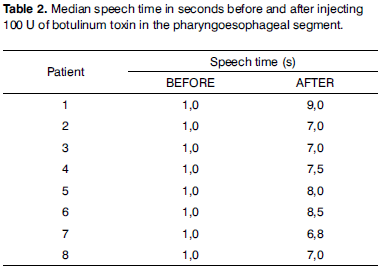Tracheoesophageal voice (TEV) with voice prosthesis (VP) is an efficient and reproducible method used in vocal rehabilitation after total laryngectomy (TL), prevented by spasms in the pharyngoesophageal segment (PES). Computerized Manometry (CM) is a new, direct and objective method used to assess the PES. AIM: to carry out an objective analysis of the PES, with CM, before and after the injection of botulinum toxin (BT). STUDY DESIGN: clinical-prospective. MATERIALS AND METHODS: analysis of eight patients consecutively submitted to TL with TEV and VP, without vocal emission, with PES spasms seen through videofluoroscopy, considered the gold standard for spasm detection. All had their spasms treated with the injection of 100 units of BT in the PES. The assessment was based on PES videofluoroscopy and CM, before and after BT injection. RESULTS: There was a PES pressure reduction according to the CM after BT injection in all patients. The average pressure in the PES seen through the CM in eight patients before BT injection was 25.36 mmHg, and afterwards it dropped to 14.31 mmHg (p=0.004). There was vocal emission without stress and PES spasm improvement seen through the videolaryngoscopy after BT injection. CONCLUSION: We observed a reduction in PES pressure after BT injection, seen through CM in all the patients, with spasms improvement seen through videofluoroscopy.
toxin; laryngectomy; manometry; neck; speech






